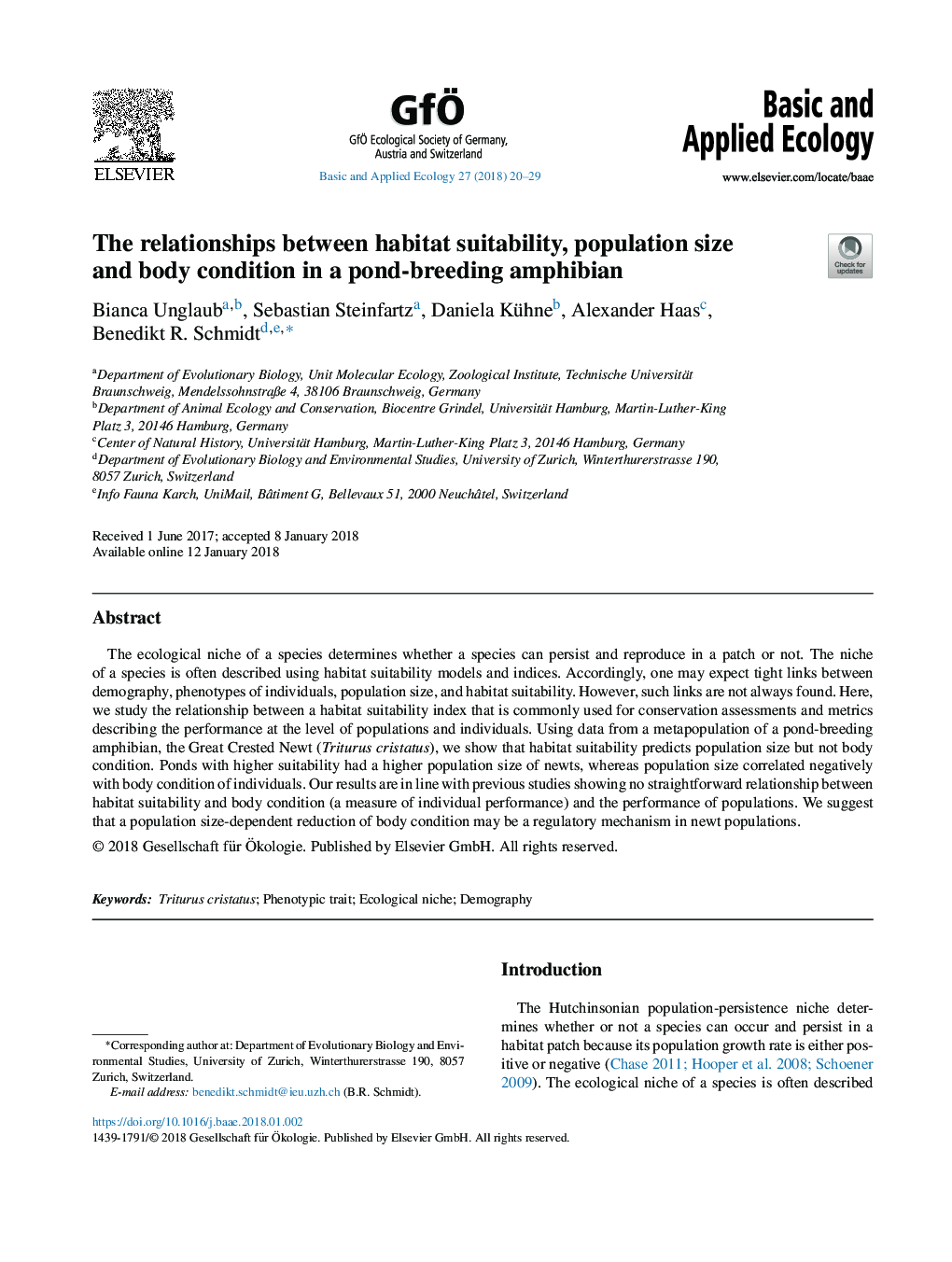| Article ID | Journal | Published Year | Pages | File Type |
|---|---|---|---|---|
| 8847025 | Basic and Applied Ecology | 2018 | 10 Pages |
Abstract
The ecological niche of a species determines whether a species can persist and reproduce in a patch or not. The niche of a species is often described using habitat suitability models and indices. Accordingly, one may expect tight links between demography, phenotypes of individuals, population size, and habitat suitability. However, such links are not always found. Here, we study the relationship between a habitat suitability index that is commonly used for conservation assessments and metrics describing the performance at the level of populations and individuals. Using data from a metapopulation of a pond-breeding amphibian, the Great Crested Newt (Triturus cristatus), we show that habitat suitability predicts population size but not body condition. Ponds with higher suitability had a higher population size of newts, whereas population size correlated negatively with body condition of individuals. Our results are in line with previous studies showing no straightforward relationship between habitat suitability and body condition (a measure of individual performance) and the performance of populations. We suggest that a population size-dependent reduction of body condition may be a regulatory mechanism in newt populations.
Related Topics
Life Sciences
Agricultural and Biological Sciences
Animal Science and Zoology
Authors
Bianca Unglaub, Sebastian Steinfartz, Daniela Kühne, Alexander Haas, Benedikt R. Schmidt,
